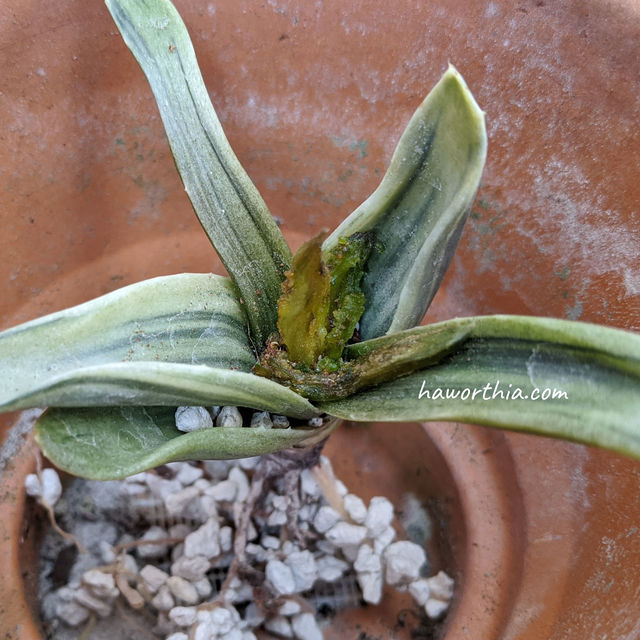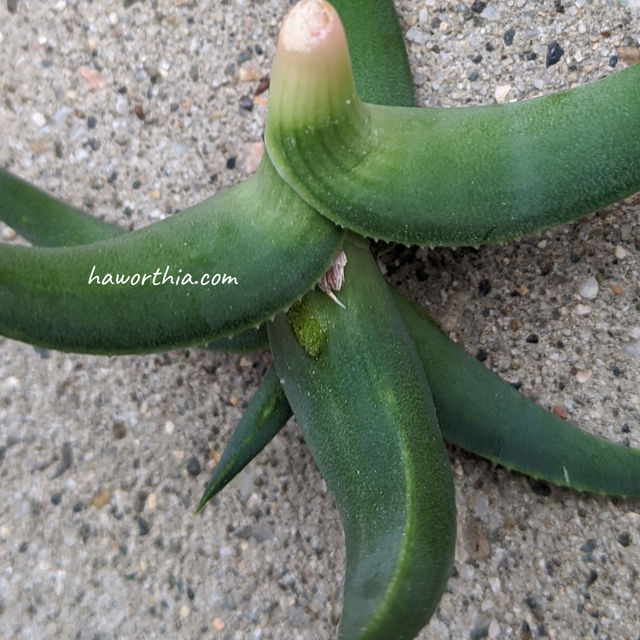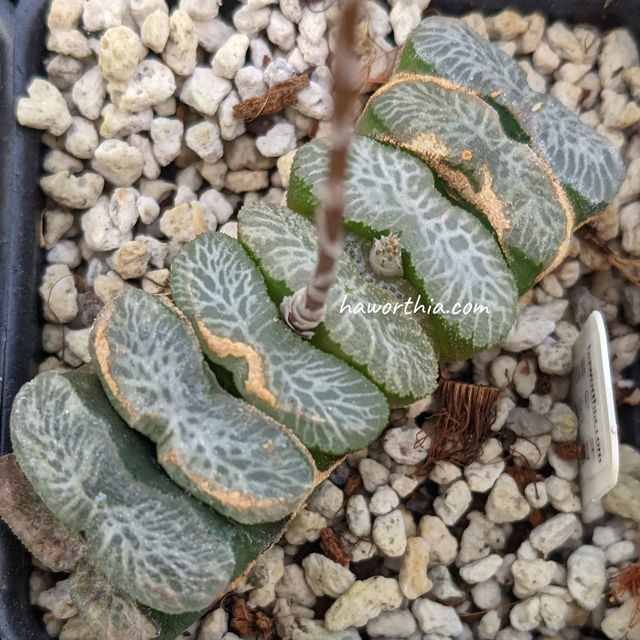Aloe Mite
While being more resistant than Aloes, Aloe mites infection in Haworthias are becoming increasingly frequent. The mites have been found in H. splendens, H. bayeri, H. picta, H. retusa, H. springbokvlakensis, various Haworthiopsis (and Gasteria) species. Aloe mites are hard to detect and extremely difficult to treat. It is important to carefully inspecting new arrivals to avoid bring them in.

Aloe mites can be identified by abnormally grown plant tissues caused by them. The abnormal tissues tend to form at growth centers, though they can form anywhere. Aloe mites can be spread through the air. Once found, the most immediate and most important thing is to quarantine the infected plant from the others to prevent further spreading.

There are no very effective ways to treat Aloe mites. It is recommended to discarding the infected plants, or at least the parts with abnormal tissues. Some healthy leaves can be preserved for leaf propagation. Rarer plants can be treated with pesticides including Abamectin, Spirotetramat, and Spiromesifen. Rotate between pesticides to slow the development of resistance.

